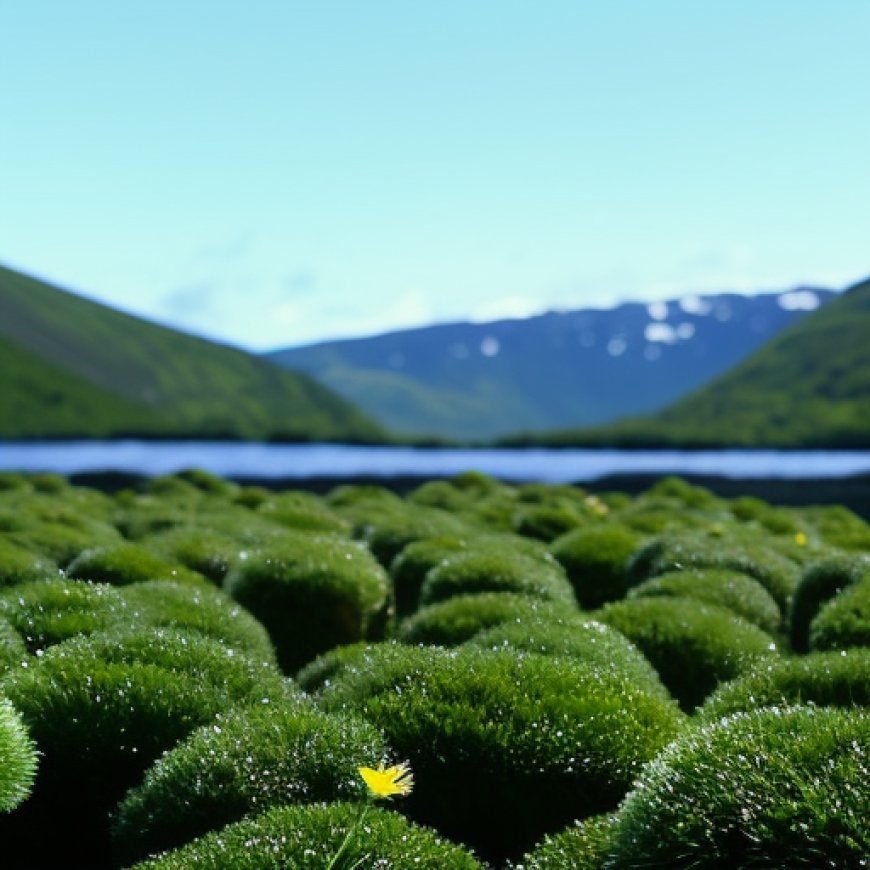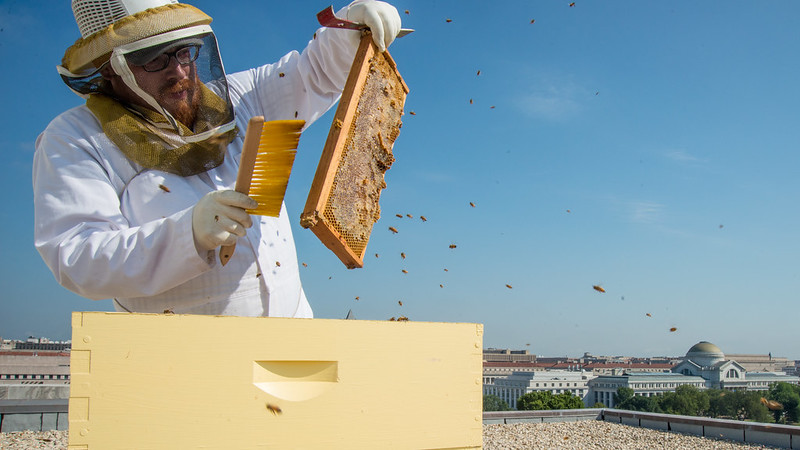We Should Aim to be at Peace with Nature, Says David Cooper of UN Convention on Biological Diversity
We Should Aim to be at Peace with Nature, Says David Cooper of UN Convention on Biological Diversity Global Issues


We Should Aim to Be at Peace with Nature, Says David Cooper of UN Convention on Biological Diversity

- Inter Press Service
HYDERABAD & MONTREAL, May 02 (IPS) – In a world faced with habitat loss and species extinction, climate change, and pollution, it’s crucial that countries develop their national action plans and create a society that lives in harmony with nature, says David Cooper, Acting Executive Secretary of the UN Convention on Biological Diversity (CBD), in an exclusive interview with IPS.
And in a year where more than 4 billion people across the globe are expected to participate in elections, Cooper believes that politicians should put biodiversity on their manifestos.
Since taking the reins from the previous Executive Director, Elizabeth Mrema, Cooper has been at the forefront of steering the CBD towards the implementation of the Global Biodiversity Framework.
Later this year, world leaders will gather in Cali, Colombia for the 16th Biodiversity Convention of the Parties (COP16) slated for October 21 to November 1, 2024 for which preparations are currently underway.
Cooper gives insight into the core issues that will be on the top of the COP16 agenda, the current status of biodiversity finance, including the newly operationalized biodiversity fund, the upcoming meetings of the scientific and technical bodies of the CBD, the current status of National Biodiversity Strategies and Action Plans (NBSAP) and what is likely to unfold in the coming months in Digital Sequence Information (DSI).

Biodiversity Finance: On Track but at Slow Pace
The UN Biodiversity Convention aims to mobilize at least USD 20 billion per year by 2025 and at least USD 30 billion per year by 2030 for biodiversity-related funding from all sources, including the public and private sectors.
However, the current situation with biodiversity funding shows that while progress is happening, it’s not fast enough. Some countries and groups are trying hard to give more money to projects that help nature, but overall, it’s still below expectations, and there are unfilled promises, Cooper acknowledges.
“We need to see a serious road map,” Cooper says, “All countries, in particular the donor country community, have to see how we are going to achieve at least that USD 20 billion by 2025 because that’s imminent.”
He called on big donors to honor their commitments.
“It’s really important that the big donors who promise money actually follow through and give the money they said they would. We need everyone to work together to make sure there’s enough money to protect our plants, animals, and the places they live,” Cooper says. “Certainly, we need to see all countries put efforts behind all of the goals and targets of the framework and that, of course, includes those on financial resources.”
Cooper welcomed the decision by the Global Environment Facility (GEF) to establish a new fund, the Global Biodiversity Framework Fund. He said the CBD secretariat was working closely with Carlos Manuel Rodriguez, the GEF CEO, and his team.
“We then saw a number of contributions to that fund coming. The contribution from Canada is a significant one of 200 million Canadian dollars. Other significant donations came from Germany, Spain, Japan, and most recently, Luxembourg. Actually, the contribution from Luxembourg, if we look at its pro rata, given the size of the Luxembourg economy, is also quite generous, even though it’s only USD 7 million in total.”
National Biodiversity Strategies and Action Plans (NBSAPs)
It’s not only about funding, Cooper says, but countries showing their commitment to their agreements, including developing NBSAPs. He acknowledged that very few countries had submitted so far.
“It’s only a few countries so far, and Spain, Japan, China, France, Hungary, and Ireland have submitted their NBSAPS, as well as the European Union,” says Cooper.
While he is optimistic that all the countries will develop their targets, he recognizes that it’s a complex process.
“I think most countries are in the process of developing their national targets, which is the first thing they’re supposed to do. But this is a process that is also supposed to engage all the different sectors of the economy and all the different parts of society, with the engagement of local communities, indigenous peoples, businesses, and so on.”
The CBD supports the countries through the complexities.
“The developing countries in particular have been supported through the Global Environment Facility. We’ve also been organizing a number of regional dialogues so that countries can share their experience as they move forward,” Cooper says.
At COP15, it was decided that all countries should submit their NBSAPs, if possible, before COP16.
“If they’re not able to submit their full NBSAPS by then, then at least they should provide their updated national targets. So, we do expect many, many countries to have progressed on their NBSAPs by COP16. Immediately prior to COP16, there will be another meeting of the subsidiary body on implementation to also take stock of where we are on that.”
COP16: What’s In, What’s Out
The core focus of CBD COP16 is
SDGs, Targets, and Indicators
1. Which SDGs are addressed or connected to the issues highlighted in the article?
- SDG 14: Life Below Water – The article mentions the reduction of waste from plastics and pollution from plastics as one of the elements of target 7 of the Kunming Montreal Global Biodiversity Framework.
- SDG 15: Life on Land – The article discusses the need for countries to develop their National Biodiversity Strategies and Action Plans (NBSAPs) and highlights the importance of halting biodiversity loss, promoting sustainable resource management, and enhancing ecosystem resilience.
- SDG 17: Partnerships for the Goals – The article emphasizes the importance of mobilizing funding for biodiversity-related projects from all sources, including the public and private sectors.
2. What specific targets under those SDGs can be identified based on the article’s content?
- Target 14.1: By 2025, prevent and significantly reduce marine pollution of all kinds, particularly from land-based activities, including plastic debris and nutrient pollution.
- Target 15.1: By 2020, ensure the conservation, restoration, and sustainable use of terrestrial and inland freshwater ecosystems and their services, in particular forests, wetlands, mountains, and drylands, in line with obligations under international agreements.
- Target 17.2: Developed countries to implement fully their official development assistance commitments, including the commitment by many developed countries to achieve the target of 0.7 percent of ODA/GNI to developing countries and 0.15 to 0.20 percent of ODA/GNI to least developed countries; ODA providers are encouraged to consider setting a target to provide at least 0.20 percent of ODA/GNI to least developed countries.
3. Are there any indicators mentioned or implied in the article that can be used to measure progress towards the identified targets?
- Indicator 14.1.1: Index of coastal eutrophication and floating plastic debris density.
- Indicator 15.1.1: Coverage by protected areas of important sites for mountain biodiversity.
- Indicator 17.2.1: Net official development assistance, total and to least developed countries, as a proportion of the Organization for Economic Cooperation and Development (OECD) Development Assistance Committee donors’ gross national income (GNI).
Table: SDGs, Targets, and Indicators
| SDGs | Targets | Indicators |
|---|---|---|
| SDG 14: Life Below Water | Target 14.1: By 2025, prevent and significantly reduce marine pollution of all kinds, particularly from land-based activities, including plastic debris and nutrient pollution. | Indicator 14.1.1: Index of coastal eutrophication and floating plastic debris density. |
| SDG 15: Life on Land | Target 15.1: By 2020, ensure the conservation, restoration, and sustainable use of terrestrial and inland freshwater ecosystems and their services, in particular forests, wetlands, mountains, and drylands, in line with obligations under international agreements. | Indicator 15.1.1: Coverage by protected areas of important sites for mountain biodiversity. |
| SDG 17: Partnerships for the Goals | Target 17.2: Developed countries to implement fully their official development assistance commitments, including the commitment by many developed countries to achieve the target of 0.7 percent of ODA/GNI to developing countries and 0.15 to 0.20 percent of ODA/GNI to least developed countries; ODA providers are encouraged to consider setting a target to provide at least 0.20 percent of ODA/GNI to least developed countries. | Indicator 17.2.1: Net official development assistance, total and to least developed countries, as a proportion of the Organization for Economic Cooperation and Development (OECD) Development Assistance Committee donors’ gross national income (GNI). |
Copyright: Dive into this article, curated with care by SDG Investors Inc. Our advanced AI technology searches through vast amounts of data to spotlight how we are all moving forward with the Sustainable Development Goals. While we own the rights to this content, we invite you to share it to help spread knowledge and spark action on the SDGs.
Fuente: globalissues.org

Join us, as fellow seekers of change, on a transformative journey at https://sdgtalks.ai/welcome, where you can become a member and actively contribute to shaping a brighter future.







